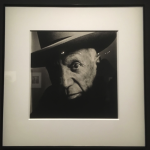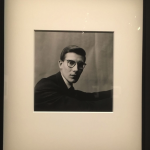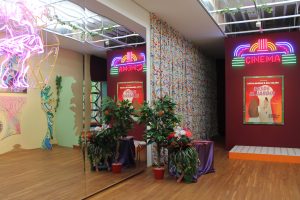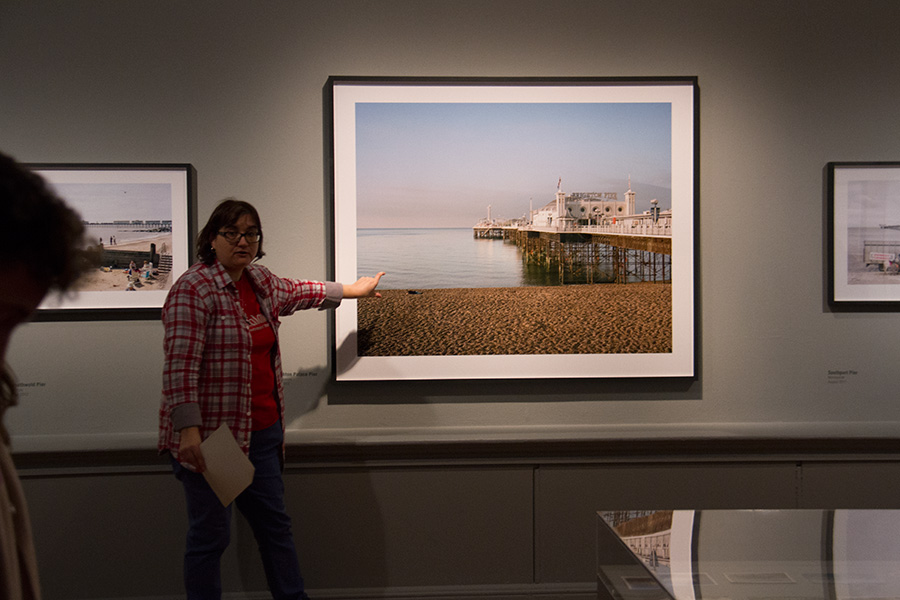MA History of Design and Material Culture student, Maria Paganopoulou, reflects on lesser-known aspects of the Bauhaus in its centenary year.
While writing my undergraduate thesis on the Arts and Crafts movement, one of the things I found most frustrating was encountering academic writing that condemned the whole of the movement, considering it a failure in its social purposes, design reform and even in its attempted improvement of women’s rights. Very often those academics regarded the Bauhaus as the successful offspring of Arts and Crafts’, as the place where its ideas fully developed, although these narratives were often coloured by nostalgia. Those academics tended to celebrate Bauhaus’ embrace of the machine and mass production and consider the rejection of them by the Arts and Crafts movement as the ultimate reason behind its failure. Arts and Crafts has tended to be characterized as merely a bourgeois endeavour for the middle and upper-classes.
As a result of these debates and my study of them, I have been irresistibly drawn to alternative narratives that challenged the authoritative status of the Bauhaus and consider it historically rather than wishing nostalgically for its resurrection. Needless to say, when I discovered an opposition to the turn that Bauhaus had taken towards the machine and machine aesthetics, especially one coming from within the Bauhaus, I was utterly fascinated.
I made this discovery during my three-month internship at Gerhard-Marcks-Haus in Bremen, Germany, a museum dedicated to Gerhard Marcks, sculptor and also a member of the Bauhaus teaching staff. Gerhard Marcks was in fact one of the first three artists that Walter Gropius invited to teach in his newly merged/ founded institution, along with the infamous Lyonel Feininger and Johannes Itten. Marcks and Gropius knew each other from 1907 through Marcks’ brother Dietrich who, like Gropius, was an architect. The two young artists shared a vision to align art and craft and, according to Marcks, this was why he accepted the position of Professor (Form-Meister) in Bauhaus.

Fig 2. Renate Riedel, Thoma Gräfin Grote, Max Krehan and Marguerite Friedlaender in front of the workshop.
After the news spread about the establishment of the Bauhaus in Weimar, Max Krehan, a local potter who owned a workshop in Thuringia, approached Gropius for a potential collaboration. Gropius and Marcks visited his workshop in Dornburg and came to the conclusion that this was where the ceramics workshop of the Bauhaus should be established. In 1920 the plan was realized and the Dornburg Workshop came to life, 20 miles away from the central Bauhaus premises in Weimar, with Gerhard Marcks as its Form-Meister and Max Krehan as its Werk-Meister (master of technical aspects).
The intertwined life and teaching in the workshop were not ideal; on the contrary they were deliberately challenging. In Marcks’ writings, he emphasised the traditional aspects of the work of the workshop, especially in relation to the absence of advanced machinery and the physically demanding nature of the job that its absence caused. The potters’ wheels were operated by foot power rather than electricity. The ovens were wood-fired. However, the use of traditional equipment was perceived in a positive light. As Marcks wrote: “This was the purest nature”.
The learning procedure was long and for the first two years apprentices were allowed to experiment only with their decoration before they were considered ready to experiment “plastically” with the forms. To compensate for the hard work and the restrictions imposed, there were leisure activities, such as swimming and the collective reading of seminal texts. We can see, then, that this autonomous community, developed in the framework of the Bauhaus, functioned a lot more like C. R. Ashbee’s Guild and School of Handicraft in Chipping Camden in Britain, rather than a school dedicated to industrial design. Nature, traditional equipment, common life and the concept of rural escape employed in the Dornburg workshop therefore reflect previous ways of thinking.
As far as what was happening in the central Bauhaus, Marcks didn’t hesitate to voice his dissatisfaction. In letters to Gropius, Marcks made clear that Bauhaus should be a workshop not a school. He also stressed the need for contact with materials and the making of objects. This differentiated him from other Form-Meisters in the Bauhaus who were more interested in painting or in the intellectual aspects of creation, leaving the teaching of technical skills to the Werk-Meister. Finally, Marcks stood at a clear distance from the mass production shift advocated by Theo van Doesburg. In his words “I cannot identify anymore with Bauhaus. Sooner or later Formalism is taking place. If I was in Weimar I wouldn’t still be in Bauhaus”. The tale of the end of the Dornburg Workshop is a short one. Bauhaus moved to Dessau and Gerhard Marcks wasn’t invited to continue teaching. Max Krehan also died in 1925, around the time of this decision.
Last year, the Dornburg Workshop opened its gates as a museum as part of the Bauhaus centenary commemorations. Despite this, its story is relatively unknown, even in Germany. The history of the Bauhaus comprises many lesser-known stories that run in parallel with the evolutionary narrative of the heroic modernist school which, it is claimed, came to succeed where previous movements had miserably failed. The dominance of this modernist narrative, it seems to me, is partly informed by the stylistic preferences of those doing the telling. As the case of the Dornburg Workshop shows, however, Bauhaus shared common roots with some earlier Arts and Crafts endeavours instead of overthrowing them entirely.
Kind thanks to Gerhard-Marcks-Haus for providing me with access to their resources and archives.
































